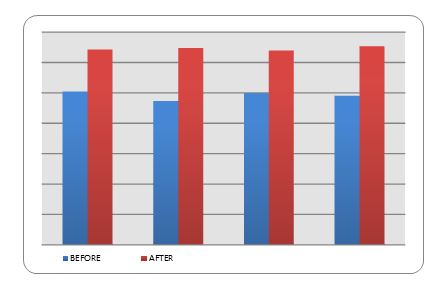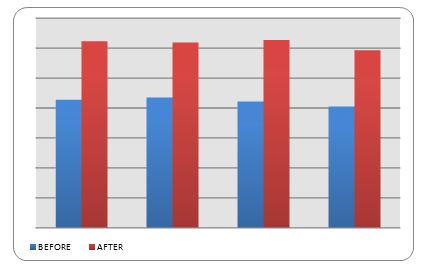 |
August 2012
|
August 2012 // Volume 50 // Number 4 // Ideas at Work // v50-4iw2
Expanding the Reach of Extension to Underserved Audiences Through Study Circles in Rural Idaho
Abstract
Extension educators expanded the reach of their programming to underserved audiences through the implementation of Study Circles in rural Southern Idaho. Study Circles gave educators entry into communities by establishing relationships necessary for long-term change. Study Circle discussions in rural Southern Idaho led to stronger relationships among community members, religious organizations, civic groups, elected officials, youth, ethnic groups, and those of different socio-economic status. The Study Circle tool could be implemented in many venues, including leader's councils, advisory groups, stakeholder meetings, youth/adult partnerships, city and county government, and program development.
Introduction
Community members are empowered and motivated to work for the betterment of their community when they are well informed and given the opportunity to participate in decision-making (Ricketts & Place, 2009). However, often rural community residents lack a voice in community decision-making (Luther & Walls, 1998), including Extension programming. This void in communication leads to a deterioration of collaborative relationships within the community and with their Extension provider. "Effective communication can be seen as the cornerstone of any functional community" (Ricketts & Place, 2009). Deterioration of relationships crucial to rural community development (DeBord, 1991) makes it difficult for Extension educators to meet community needs.
Study Circles
Study Circles help people build the trusting relationships necessary for long-term change (Rourke, 2008). Study Circles are a group of people who come together to discuss a specific topic, such as poverty. Study Circles are conducted in small groups (up to 10 people) representing the diversity of the community. Diversity among the conversation participants is essential for maximizing the depth and breadth of the discussion.
Study Circle facilitators provide guidance by asking open-ended questions about a complex community issue. Facilitators are not experts on the discussion topic but are prepared to lead a conversation, creating a friendly, comfortable, and relaxed atmosphere where everyone contributes to the discussion. The facilitator remains neutral without offering personal opinion, while keeping the discussion focused and following grounds rules established by the group, The facilitator monitors the discussion, ensuring one person does not dominate conversation and directing participants to turn to each other for answers, Throughout the process, the facilitator asks the participants to summarize the key points and conclusions of the group.
Study Circles were the initial activity of the Horizons program implemented by University of Idaho Extension. The Horizons program, funded by the Northwest Area Foundation, aims to reduce poverty and builds leadership capacity in rural communities with a population of less than 5,000 and a poverty rate of at least 10% according to the 2000 census. Forty-seven percent of the people participating in Study Circles were at least 100% of the federal poverty level (Table 1).
| Total # of Study Circle Participants | # of participants at 100% federal poverty level | # of participants 100 - 150% federal poverty level | # of participants at 150 -200% federal poverty level |
| 731 | 50 | 68 | 60 |
In the Horizons program, small groups of community members met for five 2-hour sessions using Everyday Democracy's dialogue-to-change program, Thriving Communities working together to move from poverty to prosperity for all as the discussion guide, The topics discussed in the Study Circle process helped the community members discuss the ways poverty affects their community (Table 2). University of Idaho Extension personnel trained 125 community members to serve as facilitators for the 15 communities participating in the project.
| Study Circle Session | Discussion Topic |
| Session One | How are We Connected to Our Community and to Poverty? |
| Session Two | A Vision for Our Community, What Does Poverty Look Like Here? |
| Session Three | Why is There Poverty in Our Community? |
| Session Four | Reaching Our Vision and Reducing Poverty |
| Session Five | Moving to Action |
Seven hundred thirty-one community residents participated in Study Circles. Because these residents are from small rural communities with a poverty level above 10%, they are classified as an underserved population. Participants found this process to be very helpful in gaining an understanding about their community and each other. "Study Circles was an exciting entry into the Horizons Program. Getting people to talk about the community in a productive way was a huge step in identifying issues." In one of the Study Circles one participant stated, "The tone in the room changed some when one young woman described her struggle as a young mom with children who had disabilities."
Through spending time together and focusing on poverty, participants were motivated to work together to provide opportunities for everyone to thrive. In the Idaho Horizons communities, 65.9% of the Study Circle participants have already taken action to reduce poverty. Post-program survey data measured the participants' knowledge and understanding of poverty before and after participating in Study Circles. Overall, 81% increased their knowledge of poverty.
Community members were moved to action to improve their communities. One Study Circle participant said.
(Through the Study Circles) I learned more about how extensive the poverty is in Lava and felt moved to find a way to be part of the solution. It fostered discussion and openness and honesty which brings everyone one step closer to seeing clearly, defining and acting responsibly.
In addition to increasing knowledge and awareness of poverty (Figures 1 and 2), the Study Circles led to stronger relationships among community members, religious organizations, civic groups, elected officials, youth, ethnic groups, and those of different socio-economic status. Newly elected members of city government are implementing this strategy in several of the participating communities.
Figure 1.
Results from Pre- and Post-Survey Data: Poverty Knowledge and Awareness

Figure 2.
Results from Pre- and Post-Survey Data: Action to Reduce Poverty

Implications for Extension
Study Circles are a tool to be used in many different facets of Extension (Cristovao, Ferrao, & Madeira, 2009). This model could be implemented in several venues, including leader's councils, advisory groups, stakeholder meetings, youth/adult partnerships, city and county government, and program development. 4-H programs can use Study Circles to evaluate the need and success of current teen activities and increase teen involvement. Community Resource Development educators can use the Study Circle model to develop relationships with and empower community members to address issues such as poverty or attracting new businesses, Also, Natural Resource educators will develop relationships with stakeholders by involving them in the Study Circle process to address issues related to effective use of natural resources. The relationships developed during discussions build trust among participants, which leads to more collaborative efforts. "When community members are given appropriate information and allowed to invest themselves in suitable decision-making opportunities, they are empowered and much more likely to work for the good of the community" (Ricketts & Place, 2009).
Acknowledgments
We appreciate the involvement of the following Extension educators who served as Horizons Phase III Community Coaches: Christi Falen, Chad Cheney, and Joel Packham.
References
Bjerkaker, S. (2006). The study circle—For learning and democracy. National Institute of Adult Continuing Education, 39(2-3), 49-60.
Cristovao, A., Ferrao P., & Madeira R. (2009). Circles and communities, sharing practices and learning: Looking at new Extension Education approaches. Journal of Agriculture Education and Extension, 15(2), 191-203.
DeBord, K. (1991). Facing reality in rural America. Journal of Extension [On-line], 29(1) Article 1FRM1. Available at: https://www.joe.org/joe/1991spring/f1.php
Rourke, B. (2008).). Thriving communities working together to move from poverty to prosperity for all. Retrieved from: http://www.everyday-democracy.org/en/Issue.12.aspx
Luther, V., & Emery M. (1998) Clues to rural community survival. Lincoln, NE: Heartland Center for Leadership Development.
Ricketts, K. G., & Place, N. T. (2009). Making communities more viable: Four essential factors for successful community leadership. Journal of Extension [On-line], 47(2) Article 2IAW2. Available at: https://www.joe.org/joe/2009april/iw2.php




